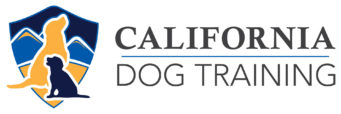By Martinique Eimer
Understanding your relationship with your dog.
Dog behaviorist and researchers alike understand that the dog by nature is reward driven. Meaning, whatever a dog’s actions are, what your dog is doing right this second (good, bad, cute or ugly) is due to the fact that the dog feels it is receiving an immediate perceived benefit from its action. In other words, your dog is always behaving in a way that seeks to improve its own overall experience.
A dog that has a healthy relationship with its people, has a calm and relaxed demeanor. It is secure, willing to please and responds to what it is asked to do happily! Even high energy dogs display these qualities when all is well in their world.
Unfortunately, as pet dog owners, we sometimes struggle to interpret our dog’s behavior. Our dogs in turn struggle to understand what we want from them. As a result, many dogs are unable to decode the world around them. They must create their own structure, routine and hierarchy the best they can. This is a dog’s innate and ultimately misunderstood social and emotional need.
While man and dog have coexisted for thousands of years together, to this date, the two species still have very different ideas about how the world ought to work and how they convey information to each other. In order to build a healthy relationship with your dog we must bridge the gap and erase the confusion.
“All his life he tried to be a good person. Many times, however, he failed. For after all, he was only human. He wasn’t a dog.”
– Charles M Schulz (cartoonist and creator of Snoopy)
I like to use the most universal example of this. The dog growl versus the human smile. When a dog is demonstrating aggression it shows its teeth… this is very different from the associated human action of showing teeth, which conveys the exact opposite thing — happiness! When a dog shows its teeth at us, there are few times a person would say “Look he’s smiling!”
There are thousands of very common and more less recognized dog body language cues that humans typically misinterpret. This is usually because we impart our human experience onto our dog (anthropomorphize). Our dog’s experience is vastly different from our own!
It is the absence of a common language or effective communication system, that results in a relationship that is suffering on both sides. This applies to people-people relationships, it applies to dog-dog relationships, and luckily for us it also applies to people-dog relationships!
While humans and dog often have very different ideas a healthy relationship is absolutely in reach! When built on accurate interpretation of information, a quality communication method and incentive, you are guaranteed to succeed and grow together.
Dog’s and people tend to lack a common means of accurately communicating to one another to create mutually beneficial outcomes, but it doesn’t need to be that way.

In order to build healthy relationships between dogs and people we use a combination of Positive Reinforcement Training Methods and skilled dog behavior reading and interpretation.
Positive Reinforcement is the tool that transforms and transfers perceived benefits into REAL benefits for both the dog and the human experience together.
Accurate understanding of Dog Behavior, experience and body language is the tool we use to decode the dog’s experience and understand “what” it is feeling in order to redirect it to what is best for us and them.
Building a quality relationship should accurately interpret the dogs language and it provide the dog appropriate tools to respond to human language, thus healthy relationship based on mutual respect, trust and consistency develops.
But what does this look like? How should training go about improving the dog-people relationship? How will an experienced dog trainer help me accomplish my goals practically in the home?
